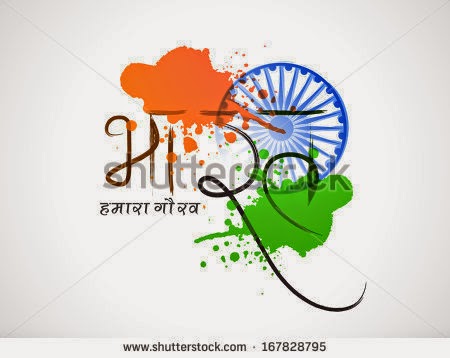- Republic of India, also known as Bharat and other names in Hindi and other languages, is an independent country in South Asia.
- India is the seventh biggest nation in the world and in terms of population, it is the second most populated country in the world (after China). India is famous for being the most densely inhabited democratic state in the world with 1.2 Billion people.
- The population of India comprises Hindus, Muslims, Sikhs, Jains, Buddhists, Christians, and Jews. The Lakshwadeep Islands and Indian mainland are closely located to Maldives and Sri Lanka in the Indian Ocean.
- The traditional and cultural affluence characterizes the extensive history of India. Four of the key religions in the world - Buddhism, Hinduism, Sikhism, and Jainism have their origins in India.
- At the same time, other religions such as Judaism, Zoroastrianism,
Islam, and Christianity came to India in the first millennium common era
and created the varied culture of India.
- India was subject to Company Rule by the British East India Company since the early 18th century and occupied by the United Kingdom from the middle of the 19th century.
- India is a federal constitutional republic. The country follows the parliamentary democracy system, comprising 29 states and seven union territories.
- The society of India can be referred to as a multilingual, pluralistic, and cosmopolitan society and over 400 languages are used in the country. India is home to a variety of flora and fauna in a range of protected areas.
- India is home to a range of mountains and rivers. Important mountain ranges include the Himalayas, the Satpura and Vindhya Mountain Ranges, and the Eastern and Western Ghats Mountain Ranges.
- The rivers of India can be broadly categorized into the following:
Himalayan Rivers
The Indus, Jhelum, Chenab, Ravi, Beas, Sutlej, and Saraswati are the important Himalayan Rivers.
The Ganga Rivers
Ganga (also Ganges) and its tributaries like the Yamuna, Chambal, Kosi, and Damodar form the Ganges River System.
Brahmaputra Rivers
The Brahmaputra and its tributaries like the Tista, Subansiri, Tsang-Po, and Jamuna create the Brahmaputra River System.
Peninsular Rivers
The Mahanadi, Godavari, Krishna, Cauvery, Narmada, and Tapi or Tapti are the major peninsular rivers.
The climate of India can be broadly categorized into the following groups:
- Tropical dry climate
- Tropical wet climate
- Montane (mountainous climate)
- Subtropical humid climate
- The Punjab plain
- The Assam Plain or Brahmaputra Plain
- The Malwa Plateau
- The Aravallis
- The Deccan Plateau
Administrative divisions of India commonly known as State or Union Territories.
11. The are as follows:
States of India
States
- Andhra Pradesh
- Arunachal Pradesh
- Assam
- Bihar
- Chhattisgarh
- Goa
- Gujarat
- Haryana
- Himachal Pradesh
- Jammu and Kashmir
- Jharkhand
- Karnataka
- Kerala
- Madhya Pradesh
- Maharashtra
- Manipur
- Meghalaya
- Mizoram
- Nagaland
- Orissa
- Punjab
- Rajasthan
- Sikkim
- Tamil Nadu
- Tripura
- Uttar Pradesh
- Uttarakhand
- West Bengal
Union Territories
- Andaman and Nicobar Islands
- Chandigarh
- Dadra and Nagar Haveli
- Daman and Diu
- Lakshadweep
- National Capital Territory of Delhi
- Puducherry (Pondicherry)
12. Biodiversity of India
India is also famous for its unique biodiversity. There are a number of eco-regions in India. It is one of the 17 mega-diverse countries in the world. India is the natural habitat of reptiles, mammals, avian, fishes, and amphibians. Almost 1/3rd of the plant species in India are indigenous plants. The forests of India can be categorized into the following:
- Tropical rainforest
- Coniferous forest
- Moist deciduous forest
- Dry deciduous forest
- Thorn forest

















